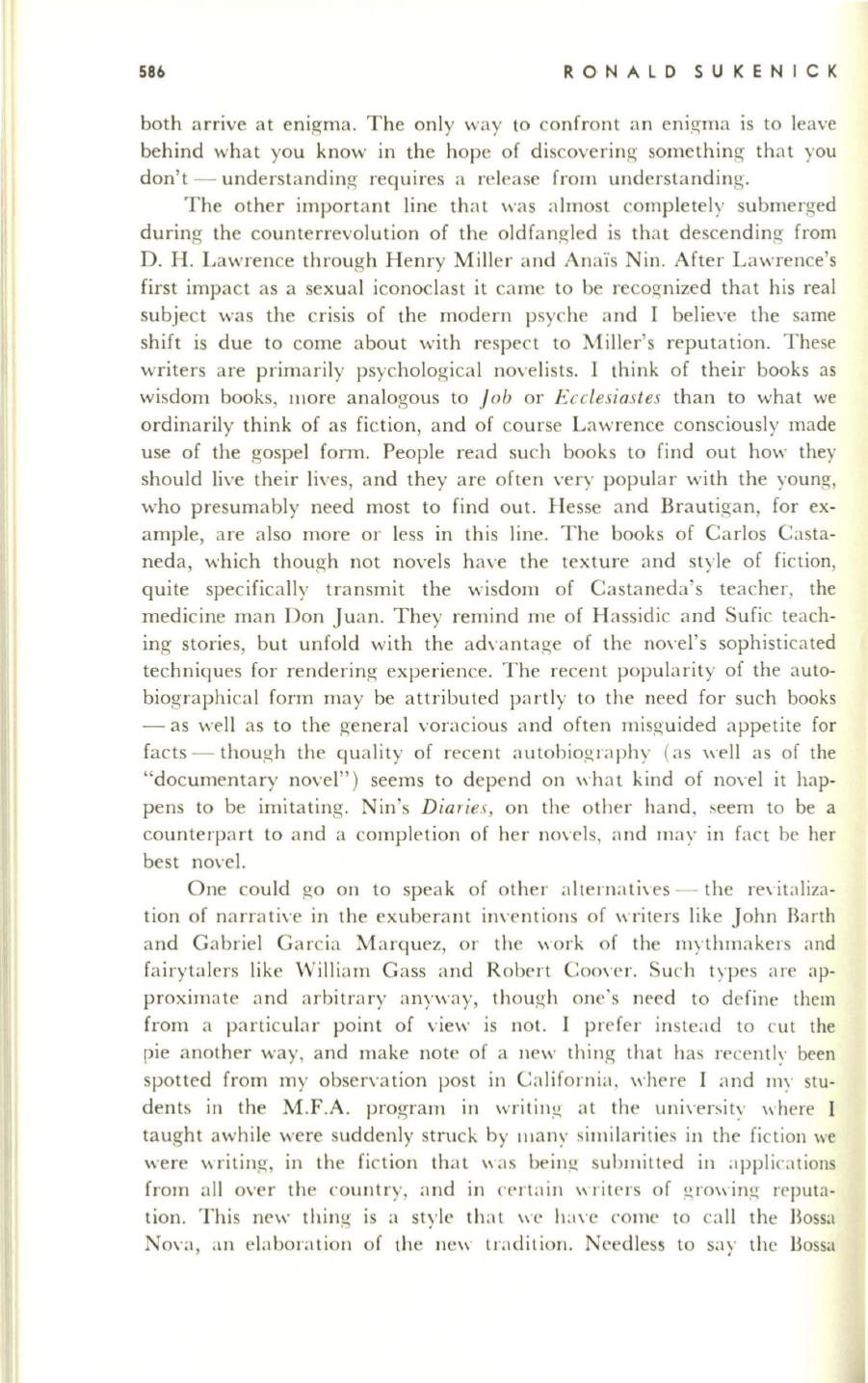
586
RONALD SUKENICK
both arrive at en igma. The only way to confront an enigma is to leave
behind what you know in the hope of discovering something that you
don't - understanding requires a release from understanding.
The other important line that was almost completely submerged
during the counterrevolution of the old fangled is that descending from
D. H. Lawrence through Henry Miller and Ana'is Nin. After Lawrence's
first impact as a sexua l iconoclast it came to be recog;nized that his real
subject was the crisis of the modern psyche and
I
believe the same
shift is due to come about with respect to Miller's reputation. These
writers are primarily psychological novelists. 1 think of their books as
wisdom books, more analogous to
.lob
or
Ecclesiastes
than to what we
ordinarily think of as fiction, and of course Lawrence consciousl y made
use of the gospel form. People read such books to find out how they
should live their lives, and they are often very popular with the young,
who presumably need most to find out. Hesse and Brautigan, for ex–
ample, are a lso more or less in this line. The books of Carlos Casta–
neda , which though not nO\'els have the texture and style of fiction,
quite specifically transmit the wisdom of Castaneda's teacher, the
medicine man Don Juan. They remind me of Hassidic and Sufic teach–
ing stories, but unfold with the advantage of the novel's sophisticated
techniques for rendering experience. The recent popularity of the auto–
biographical form may be attributed partly to the need for such books
- as well as to the genera l voracious and often misguided appetite for
facts - though the quality of recent autobiography (as \\·ell as of the
"documentary nO\'el" ) seems to depend on what kind of novel it hap–
pens to be imitating. Nin's
Diaries,
on the other hand, seem to be a
counterpart to and a completion of her novels, and may in fact be her
best novel.
One could go on to speak of other alternatives - the re\·italiza–
tion of narra ti\'e in the exuberant il1\'entions of \\Titers like John Barth
and Gabriel Garcia Marquez, or the work of the mythmakers and
fairy talers like William Gass and Robert COO\TL Such types are ap–
proximate and arbitrary anyway, though one's need to define them
from a particular point of view is not. 1 prefer instead to cut the
pie another way, and make note of a new thing that has recently been
spotted from my obsen'ation post in California. \\'here
I
and my stu–
dents in the M.F.A. program in writing at th e uni\'ersitv \\·here
I
taught awhile were suddenly struck by Iliany similarities in the fiction we
were writing, in the fiction that was being submitted in applications
from all over the country, and in certain \\Titcrs of gro\\'ing reputa–
tion. This new thing is a style that wc ha\'e comc to call the Bossa
Nova, an elaboration of the ne\\' tradition . Needless to say the llossa


